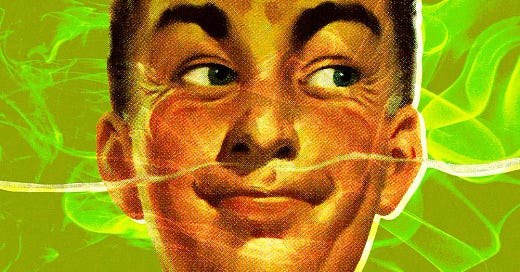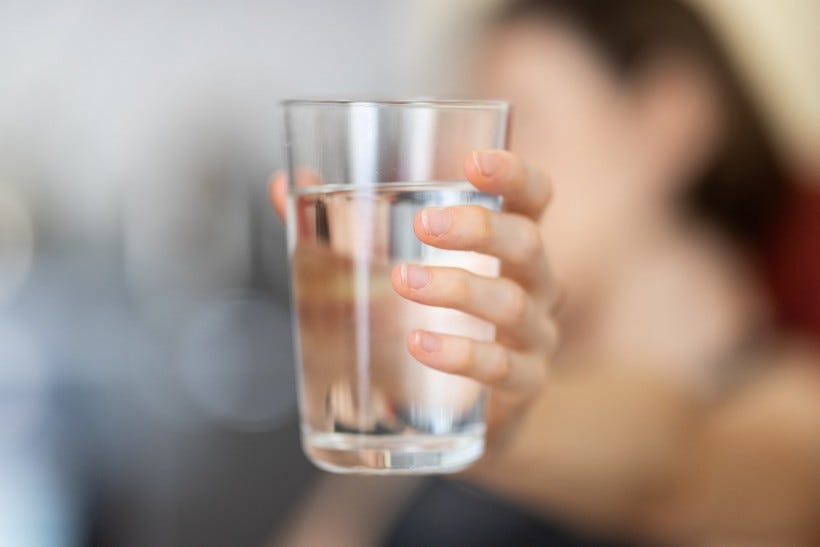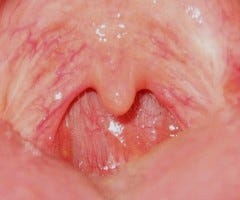Sci-Ed Update 283
Smell while asleep for memory, water toxicity, uvular functions, brain waves and memory, learning styles, Lacks legacy, effects of extreme heat, regulating yeast in the gut—your updates are here!
Study: Smelling Stuff While You Sleep Could Improve Your Memory
How do you keep your memory sharp in old age? Try going to bed and smelling the roses, according to scientists.
A new study published in the journal Frontiers in Neuroscience details how exposing adults between the ages 60 and 85 to different odors while they slept dramatically boosted their cognitive capacity — providing a hopeful avenue of staving off dementia (and maybe some incentive for you to buy a new candle).
"The idea is that it will keep the memory centers of your brain in good condition throughout life, and perhaps prevent memory loss older in life," said co-author Michael Leon, a professor of neurobiology and behavior at the University of California, Irvine Center for the Neurobiology of Learning and Memory (CNLM), in an interview with NPR.
You might even yourself be familiar with smell's powerful link to memory — maybe you've heard of a Proustian rush? An errant whiff of a perfume could suddenly dredge up long-forgotten episodes, the same way a taste of food can conjure up a feeling someone thought they'd lost forever, for example.
"The olfactory sense has the special privilege of being directly connected to the brain's memory circuits," explained Michael Yassa, a fellow neurobiology professor at CNLM, in a statement.
Read more→ AandP.info/pcz
Mom Dies from Drinking Too Much Water;
64 Ounces Ingested in Just 20 Minutes With Doctors Saying She Died From Hyponatremia
According to Mail Online, a woman died after drinking about 64 ounces of water in just 20 minutes. Ashley Summers was a mother of two, and she died at age 35 shortly after spending the day at Lake Freeman.
The woman from Indiano spent a leisurely day over the weekend; but after that, she felt a headache and became lightheaded. No matter how much she drank, she couldn't satisfy her thirst, which led her to drink four bottles of 16oz worth of water.
Upon returning home, she collapsed in the garage and experienced severe brain swelling, losing consciousness in the process. Doctors at the hospital said she had hyponatremia, which was water toxicity.
Mail Online reports that this happens when the body lacks sodium but has too much water.
Kevin Patton comment→ Read the full story (link follows). This is the kind of story that I like to use when discussion fluid-electrolyte balance in my A&P course. Alas, there always seems to be a recent, dramatic case to mention when we get to water intoxication.
Read more→ AandP.info/b5s
What Does the Uvula Do? Experts Propose Several Theories Regarding Its Function
Experts still do not fully understand the major reason why we have uvulas. The fact that only humans and baboons have this dangling flesh in the mouth adds to the mystery regarding its real purpose. Throughout history, people have interesting and contradictory ideas about the function of uvulas, as compiled in the 1992 study entitled "The Riddle of the Uvula" published by otolaryngologist Yehuda Finkelstein.
The paper describes that the human uvula is larger and is more complex than in baboons. Finkelstein and his colleagues argue believed that this tiny flesh in our mouth plays an important role in speech which distinguishes humans from the rest of the animal kingdom. It was also noted that uvula can make a large amount of saliva which can be excreted in a short amount of time.
Another report was published by science journalist Robbie Gonzales where he asked speech-language pathologist Katie Plattner regarding the real purpose of uvula. Plattner describes the theory on the function of uvula in increasing surface area to trigger gag reflex. The gag theory is supported by a review in which G.S. Bassi pointed out the role of uvula as one of the five zones that trigger gag reflex.
Kevin Patton comment→ The source article (link follows) includes a video. It does not have English subtitles, but can be used for classroom discussion without the narration.
Read more→ AandP.info/iar
New study links brain waves directly to memory
Neurons produce rhythmic patterns of electrical activity in the brain. One of the unsettled questions in the field of neuroscience is what primarily drives these rhythmic signals, called oscillations. University of Arizona researchers have found that simply remembering events can trigger them, even more so than when people are experiencing the actual event.
The researchers, whose findings are published in the journal Neuron, specifically focused on what are known as theta oscillations, which emerge in the brain's hippocampus region during activities like exploration, navigation and sleep. The hippocampus plays a crucial role in the brain's ability to remember the past.
Prior to this study, it was believed that the external environment played a more important role in driving theta oscillations, said Arne Ekstrom, professor of cognition and neural systems in the UArizona Department of Psychology and senior author of the study. But Ekstrom and his collaborators found that memory generated in the brain is the main driver of theta activity.
"Surprisingly, we found that theta oscillations in humans are more prevalent when someone is just remembering things, compared to experiencing events directly," said lead study author Sarah Seger, a graduate student in the Department of Neuroscience.
Read more→ AandP.info/qia
What Happens to the Principles of Evidence-Based Practice When Clinicians Become Educators? A Case Study of the Learning Styles Neuromyth
The approach of matching teaching practice to individual student “Learning Styles” has been repeatedly shown to be ineffective, even harmful. Yet, it appears a majority of educators believe it to be an effective approach. The status of Learning Styles theory in health professions education is unclear.
Read more→ AandP.info/uk3
How the ‘groundbreaking’ Henrietta Lacks settlement could change research

… [Lacks family attorney] Ayers notes that the circumstances under which Lacks’s cells were taken from her are unique, and that this case’s outcome might not extrapolate to others involving the use of ‘medical waste’ in research. “Litigation on behalf of the Lacks family would not open the floodgates to litigation by others that have voluntarily donated tissue or cells for other types of medical research,” he says.
Other specialists say that the case does play into a larger discussion regarding the use of people’s tissue or other biological specimens in research. Much of the human tissue used in medical research is ‘waste’ discarded during surgery. Even if a person consents to a procedure, they should “have the legal right to decide whether to allow the use or not of cells derived” from it, says Stephen Sodeke, a bioethicist at Tuskegee University in Alabama.
[cancer biologist] Wolinetz says that even today there could be a scenario in which a cell line or other sample is taken from a person and is ‘anonymized’ so that it isn’t associated with that individual, then leads to massive medical discoveries without the person knowing. To avoid this situation, she says, it would be worthwhile setting up systems that allow patients to consent to a broader use of their cells, although this would be a logistical challenge. And, she adds, researchers would want to avoid setting up any monetary incentives that would coerce people into donating samples they otherwise wouldn’t.
As for what the Thermo Fisher settlement means for other companies profiting from biological specimens, it puts the onus on them to do due diligence on how ethically their samples were sourced — even if they didn’t collect them, [legal specialist] Roberts says.
Read more→ AandP.info/pl8
Extreme heat taxes the body in many ways. Here’s how

July 2023 was the hottest month ever recorded. It could even be the hottest month in human history.
And it’s just one in a chain of broken heat records (SN: 7/13/23). A record-breaking heat wave is still lingering in the U.S. Southwest. In 2020, temperatures jumped to 38° Celsius in Siberia, marking the highest ever recorded in the Arctic Circle (SN: 7/01/20). Nine of the 10 hottest years on record have taken place in the last decade.
That heat has tested the limits of our very bodies to tragic effect: In 2003, an estimated 70,000 people died from a European heat wave. In 2022, another heat wave there caused some 62,000 deaths. Thousands more have died in other extreme heat events, and even more have suffered heat illness or injury.
The human body can adapt to heat, but only to a certain point, research has shown (SN: 7/27/22).
“The body works quite hard to keep the core body temperature within a pretty narrow range,” says Kristie Ebi, who researches climate change and health at the University of Washington in Seattle. “If you can’t cool down that core body temperature, then your cells and your organs start being affected.”
Sustained heat waves place our bodies under strain, which can set off a cascade of effects that can lead to permanent injury or death, Ebi and colleagues wrote in a 2021 review in the Lancet. Heat waves are also getting more humid, limiting our ability to cool down, and nights are growing hotter, cutting into the time we might rest and recover. Both these trends undercut our ability to adapt to rising heat.
While people have ways to keep themselves and their communities safe, heat risks will only increase with rising temperatures, researchers say. Here’s what extreme heat and high humidity do to the body — and how you can protect yourself. (link follows)
Read more→ AandP.info/wdf
Peptide YY: A Paneth cell antimicrobial peptide that maintains Candida gut commensalism

The mammalian pancreas and gut enteroendocrine cells secrete a family of peptides, including pancreatic polypeptide YY (PYY), that affect gut secretion, motility, and appetite. Paneth cells in the gut secrete several antimicrobial peptides into the lumen to regulate the microbiota, as well as PYY.
Noticing that PYY resembles the structure of known antimicrobial peptides, Pierre et al. investigated the possibility of another function for PYY... The Paneth cell–derived PYY was full length, unlike the endocrine form, and although it had some antibacterial activity, it was most effective at inhibiting the ubiquitous gut fungus Candida albicans from transforming from the commensal yeast form into the invasive hyphal form. It thus appears that full-length PYY plays a fundamental role in keeping a fungal member of the mouse microbiota in check. —Caroline Ash
Kevin Patton comment→ Paneth cell (also granule cell of Paneth) is an eponym after pathologist Joseph Paneth, but was earlier described by Gustav Schwalbe, who called them granule cells (Körnchenzellen). Perhaps we should call them granule cells going forward? That could be confusing with granule cell neurons of the cerebellum or granular leukocytes, however. Oh, what to do?
Read more→ AandP.info/k0q








